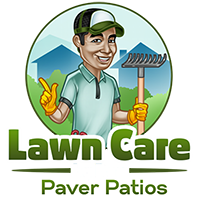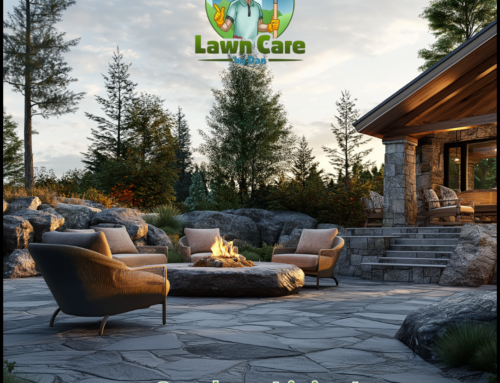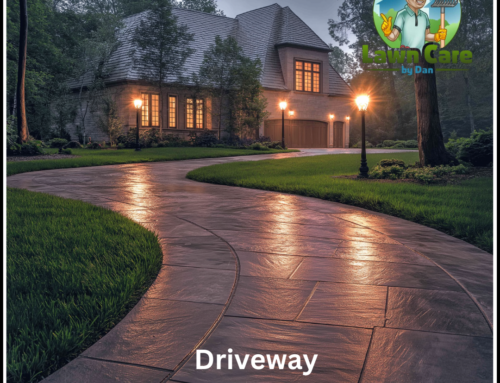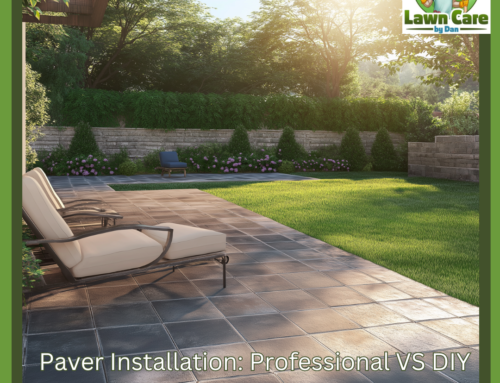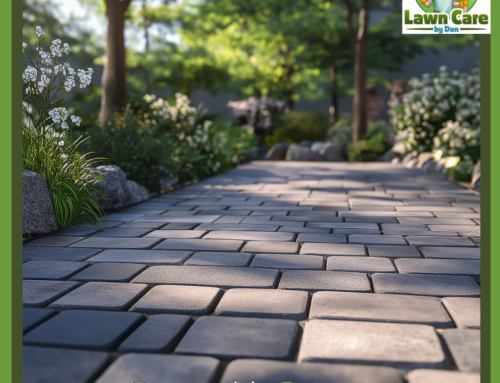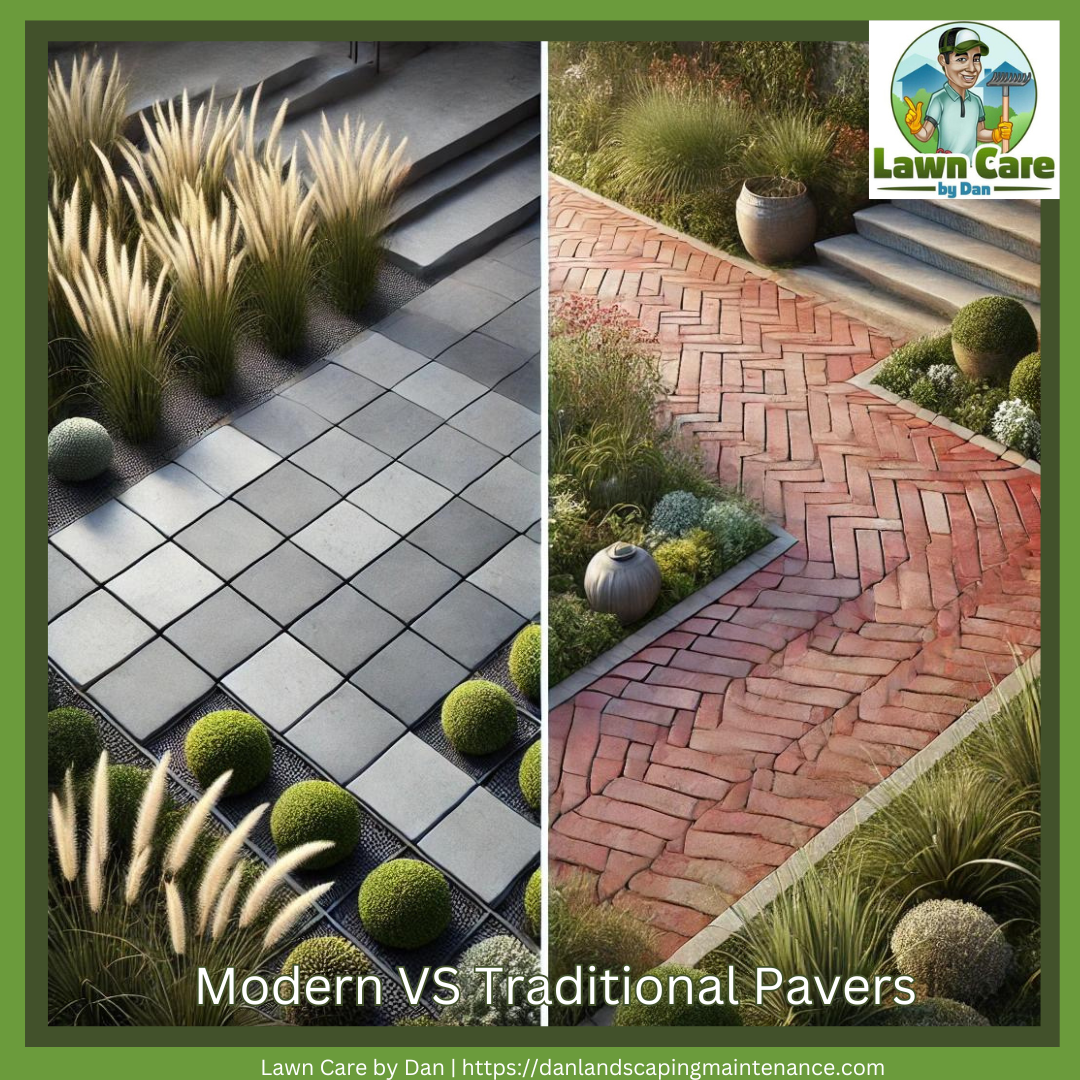
Modern vs. Traditional Paver Designs: What Fits Your Home Best?
When designing your outdoor space, the choice between modern vs traditional paver designs can make all the difference. Each style offers unique benefits, enhancing the overall appeal and functionality of your home’s exterior. But with so many options, how do you decide what fits best? Lawn Care By Dan Paver Patios guides you through this crucial decision, ensuring that your paver choice perfectly complements your home and lifestyle.
Understanding Modern Paver Designs
Sleek Lines and Minimalism
Modern paver designs are all about clean lines, simplicity, and functionality. These designs often feature large, uniform slabs of concrete, stone, or porcelain with minimal texture. The focus is on creating a streamlined look that emphasizes the beauty of open space.
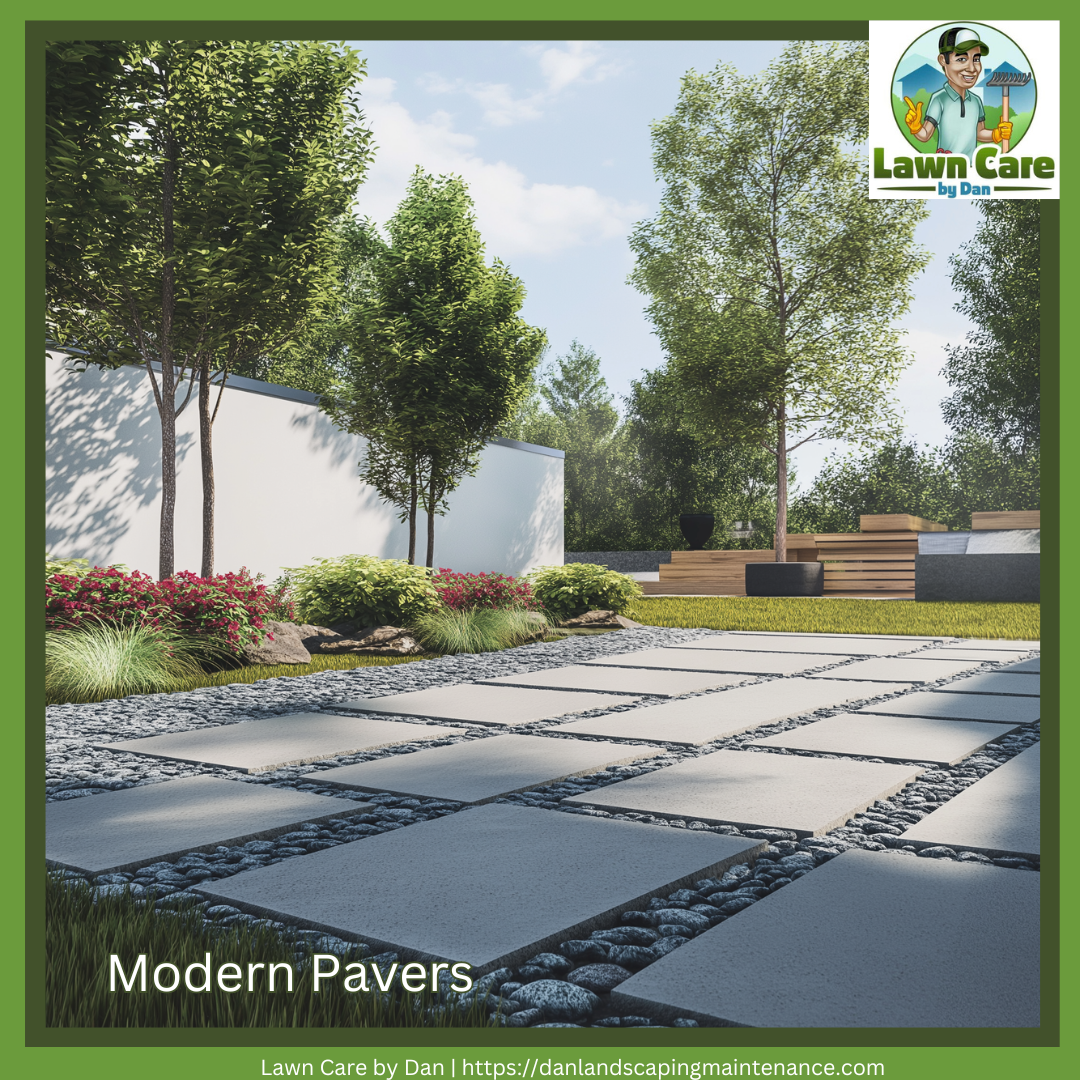
Key Features:
- Geometric shapes: Think squares, rectangles, and hexagons.
- Neutral color palettes: Grays, whites, and blacks dominate the modern paver scene.
- Smooth surfaces: Modern pavers often have a polished or honed finish, giving them a sleek appearance.
Innovative Materials and Technology
Modern designs aren’t just about looks; they also incorporate cutting-edge materials and technology. Porcelain pavers, for instance, are becoming increasingly popular due to their durability and resistance to stains and scratches. Permeable pavers are another modern innovation designed to allow water to pass through, reduce runoff, and promote eco-friendly landscaping.
Did you know that modern permeable pavers can even help recharge groundwater supplies? This makes them a sustainable choice for environmentally conscious homeowners.
Exploring Traditional Paver Designs
Timeless Elegance and Charm
Traditional paver designs evoke a sense of history and timeless elegance. They’re characterized by using natural materials like cobblestone, brick, and flagstone. These pavers often have irregular shapes and textures, adding a rustic charm that’s hard to replicate with modern materials.
Key Features:
- Rich, earthy colors: Reds, browns, and natural stone hues.
- Varied textures: Rough, tumbled, or antique finishes.
- Classic patterns: Herringbone, basket weave, and running bond are popular.
Natural Materials and Craftsmanship
Traditional pavers often require skilled craftsmanship to install, especially when creating intricate patterns or using irregular stones. Using natural materials also means that each paver has unique characteristics, adding to the overall beauty and authenticity of the design.
Cobblestone streets date back to Roman times and are still in use today in some European cities—testament to their enduring durability and charm.
Comparing the Aesthetics: Modern vs. Traditional
When deciding between modern and traditional paver designs, consider your home’s architectural style. A modern home with clean lines and a minimalist aesthetic will naturally pair well with modern pavers. Conversely, a traditional home with classic features like gabled roofs and brick facades will be beautifully complemented by traditional paver designs.
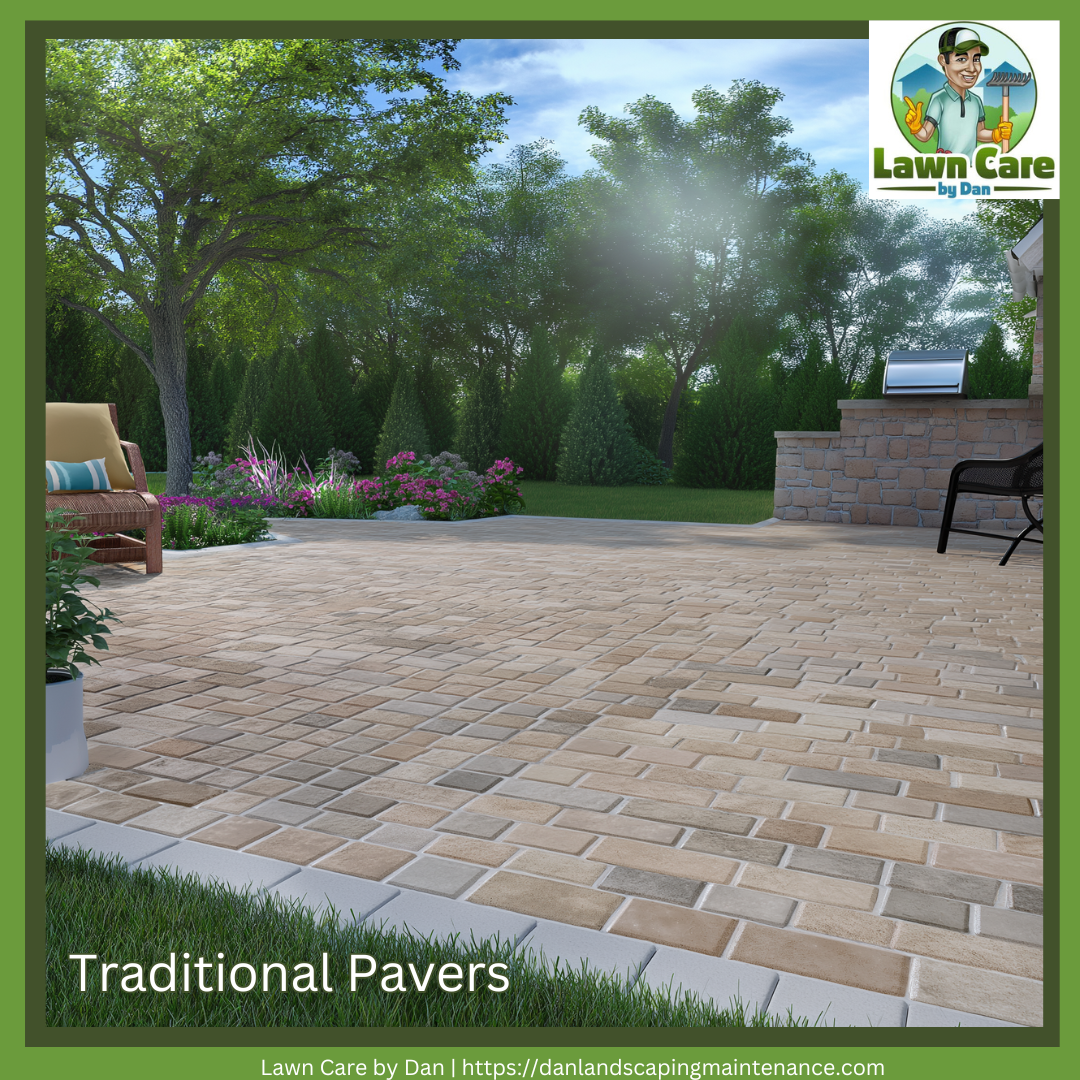
Modern Aesthetics
- Best for contemporary and minimalist homes.
- Creates a seamless indoor-outdoor transition.
- It pairs well with sleek, modern landscaping.
Traditional Aesthetics
- Ideal for historic or classic home designs.
- Adds warmth and character to outdoor spaces.
- Complements traditional landscaping elements like garden paths and flower beds.
Durability and Maintenance: Which Style Stands the Test of Time?
Both modern and traditional paver designs can be highly durable, but the materials and installation methods differ, impacting long-term maintenance.
Modern Paver Durability
- Materials: Porcelain and concrete pavers are highly durable and resistant to weathering.
- Maintenance: Smooth surfaces are easy to clean but may show stains more readily.
Traditional Paver Durability
- Materials: Natural stones like granite and sandstone are incredibly tough.
- Maintenance: Irregular surfaces may require more frequent cleaning to remove dirt from crevices, but they hide wear and stains better.
Cost Considerations: Budgeting for Paver Designs
Your budget is critical in deciding between modern and traditional paver designs. Generally, modern pavers can be more expensive due to the cost of high-tech materials and precision installation. Traditional pavers, while potentially less expensive in materials, may incur higher labor costs due to the complexity of installation.
Cost Breakdown:
- Modern Pavers: Higher material costs, potentially lower installation costs.
- Traditional Pavers: Moderate to high material costs and higher installation costs.
Investing in high-quality pavers can actually increase the resale value of your home, making it a worthwhile investment!
How to Choose the Right Paver Design for Your Home
Choosing the right paver design comes down to understanding your home’s architectural style, taste, and long-term landscaping goals. Lawn Care By Dan Paver Patios recommends exploring different designs, considering how each will look as part of your overall landscape.
Tips for Making the Right Choice:
- Assess your home’s style: Match your pavers to your home’s architecture.
- Consider the surroundings: How will the pavers interact with your garden, driveway, or patio?
- Consider maintenance: Choose a paver design that fits your lifestyle and upkeep preferences.
Conclusion
Whether you’re drawn to the sleek, modern lines or the timeless charm of traditional designs, the right pavers can transform your outdoor space into a beautiful, functional home extension. Lawn Care By Dan Paver Patios is here to help you navigate the options, ensuring that your paver choice enhances your home’s curb appeal and adds lasting value.
FAQs
Q1: Are modern pavers more durable than traditional ones?
Modern pavers, especially those made from materials like porcelain, tend to be highly durable and resistant to weathering. However, traditional pavers made from natural stone are also extremely tough and can last for decades with proper care.
Q2: Do traditional pavers require more maintenance?
Traditional pavers, particularly those with irregular surfaces, may require more frequent cleaning to remove dirt from crevices. However, their textured surfaces are excellent at hiding wear and tear, meaning they may look better over time with less upkeep.
Q3: Can I mix modern and traditional paver designs?
Absolutely! Mixing styles can create a unique and personalized look. For instance, you can use modern pavers for a sleek patio and traditional cobblestones for winding garden paths.
Q4: Which paver style is more eco-friendly?
Modern permeable pavers are designed to reduce runoff and help recharge groundwater, making them an excellent eco-friendly option. Traditional pavers made from natural, locally sourced materials are also environmentally friendly.
Q5: How do I maintain the color of my pavers?
Consider sealing your pavers after installation to maintain their color, whether modern or traditional. This helps protect against fading, staining, and weathering.
With the proper guidance from Lawn Care By Dan Paver Patios, you can confidently choose the paver design that best suits your home, ensuring a stunning, durable, and functional outdoor space for years to come.
